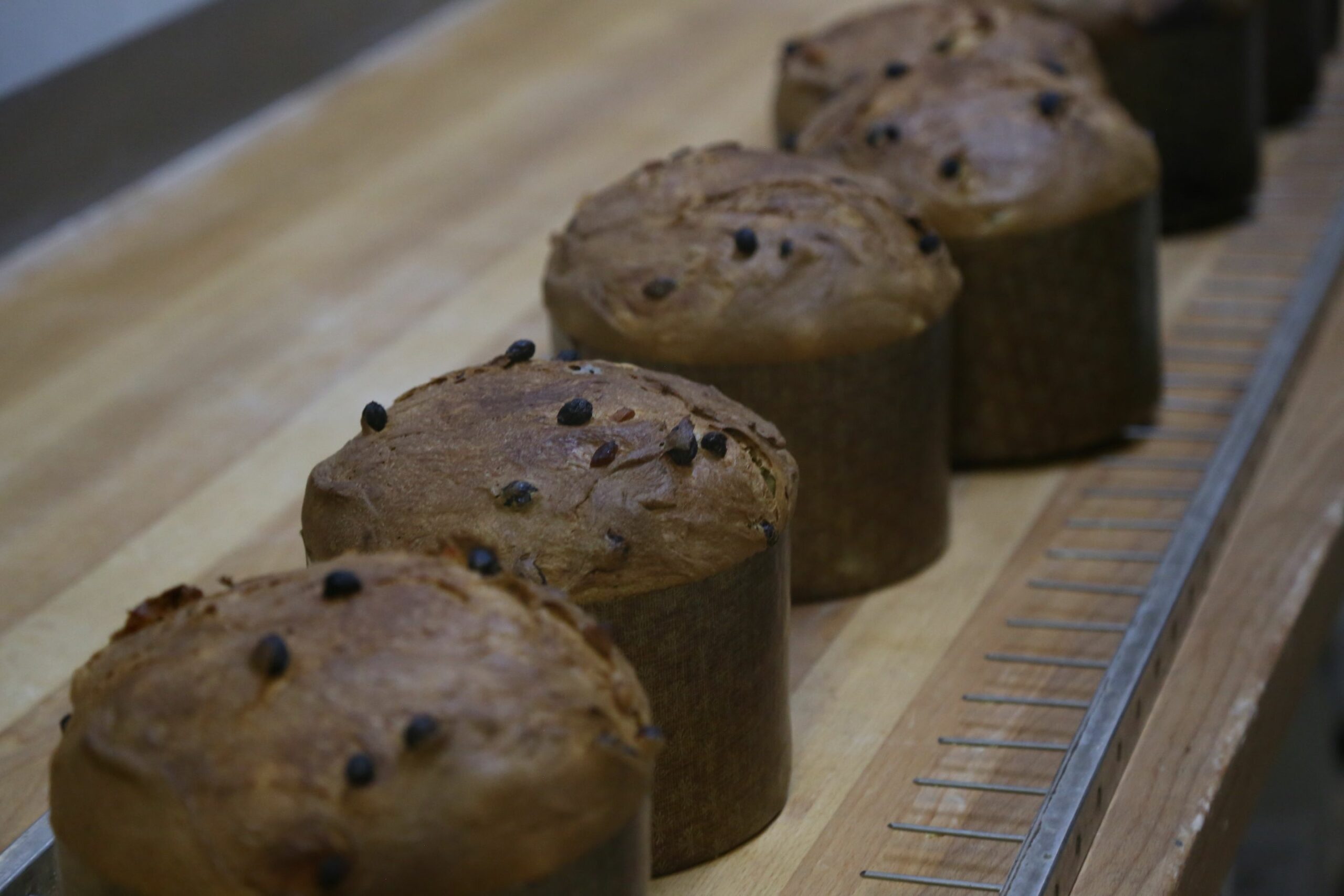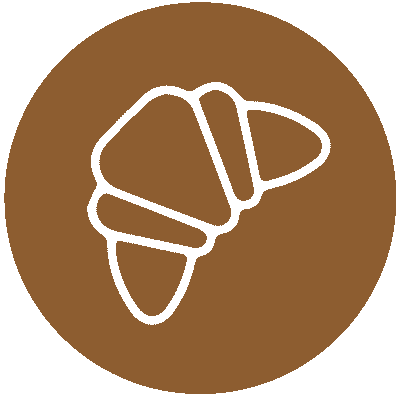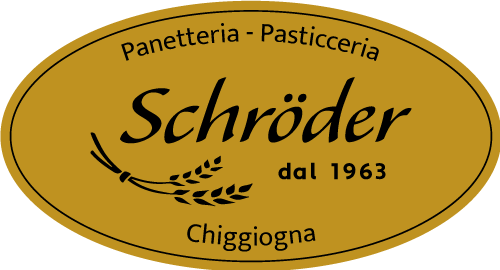Our SPECIALTIES
Spampezia, Crèfli e Panettone Ticinese
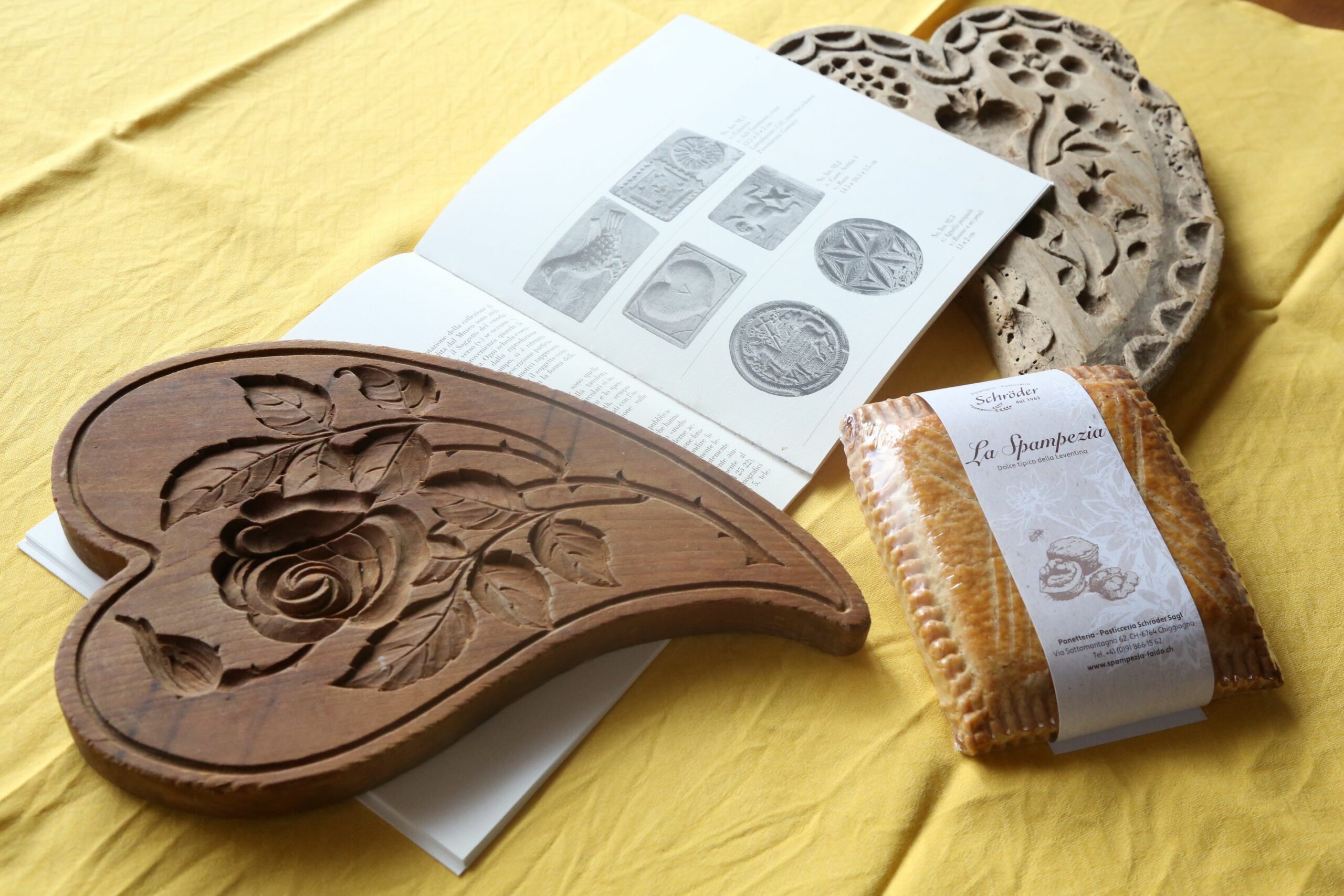
La Spampezia
A dessert with a crispy crust, a filling made from ground walnuts and a recipe guarded with love: these are the characteristics of “spampézi.”
Excerpted from the book Confidences with Merlot, 1949 by Guido Calgari
“A special mention, however, I would like to give to the folkloric dessert of Faido, in which cuisine and art, tradition and religion are married; the “spampezie,” two thin pieces of hard dough between which, as in the shells of a shell, a filling composed of chopped walnuts, honey, liqueurs and butter is clamped; the filling is lightly sautéed, while placing the first cover of dough on top of the wooden “mòdulo.” note that the forms are centuries and centuries old, they are a tradition of every family, as sacred as the furniture of the home; they were engraved by unknown craftsmen, reproducing scenes from the Gospel–the Marriage of the Virgin, Christmas–or mountain flowers or animals or lovers’ hearts; with fingertips, the dough is adhered to the cavities of the carving with ease, then every unevenness is filled with the fragrant filling; the second blanket is thrown on top, the superfluous is trimmed around the form, and placed in the oven.
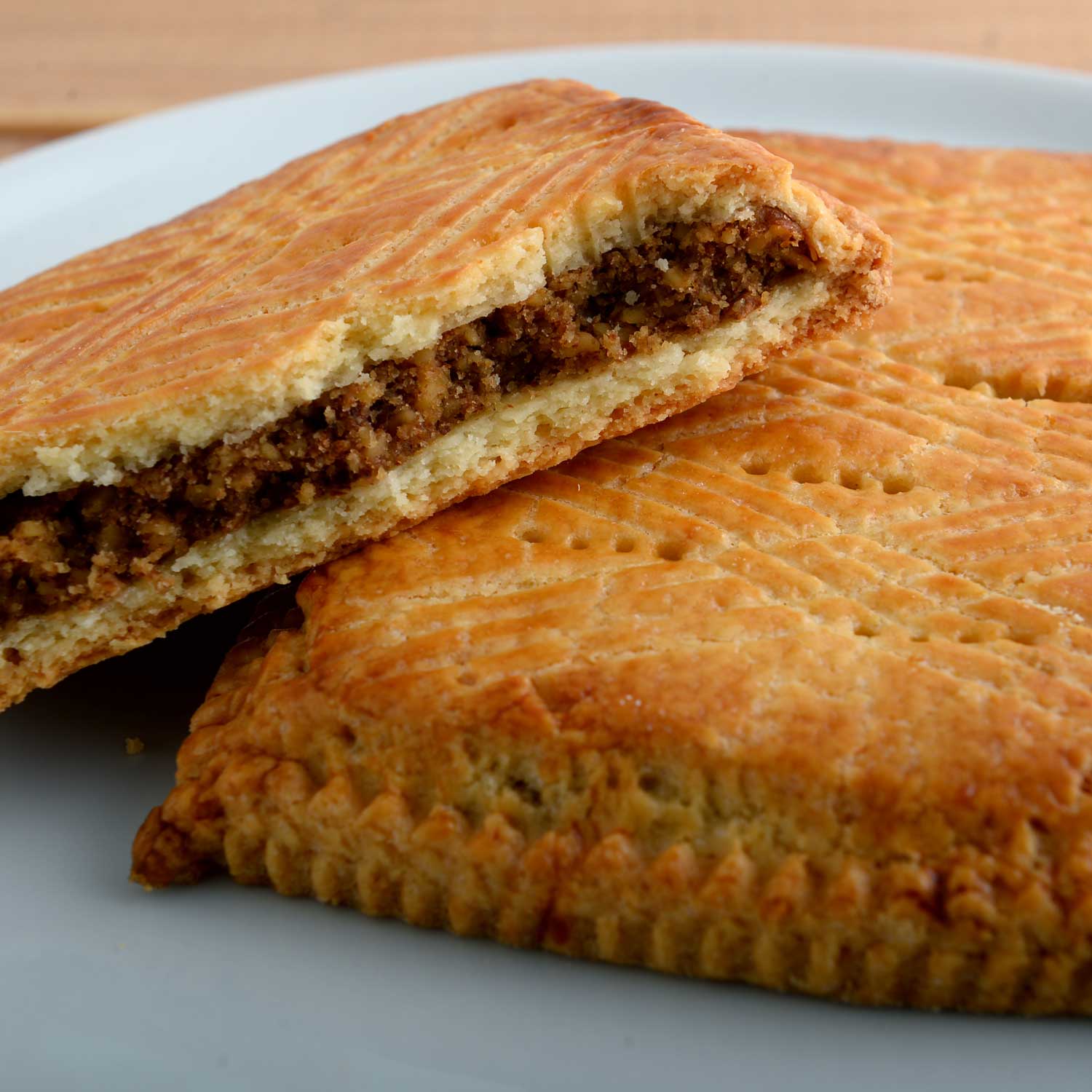
History
Spampezias are produced only in Faido, Prato, Dalpe, Osco, Chiggiogna or in other lower valley communities such as Bodio, Personico and Pollegio. Some claim that Osco is the home of spampezie. It is well known that many of its inhabitants emigrated to work in restaurants in other European states and certainly returned with new recipes, but there is no evidence that spampezie spread from there.
It seems that the original name is panspezi, meaning “spice cake,” and later the “s” was brought forward to give the forms spampezie, spampezi or spanpezi. Etymologically it would be a spice bread. Different types of spice cakes or gingerbread are produced in the rest of Switzerland, for example, St. Gallen’s Biber or Zurich’s Tirggel, which may have influenced the Leventine tradition. Sweets were less rare in Leventina than elsewhere, but they were still mainly for special occasions such as religious festivals or village festivals: spampezie were typical cookies for Christmas holidays as were crèfli, similar cookies, also produced in Alta Leventina.
We find evidence of the existence of spampezie and crèfli as early as the second half of the 18th century, thanks to the collection, on display in the Leventina Museum, of decorated molds dating from that time that were used to make the two types of cookies. These are wooden forms, which can have different shapes, carved on a facade to illustrate a figure that sometimes recalls a particular festival, sometimes the coat of arms of a lineage. Many images refer to religious motifs such as marriage, baptism, Christmas.
We even find symbols related to Easter: because they keep for a long time, crèfli and spampezie could be prepared in winter and eaten in spring, thus also for Holy Week. Unfortunately, writings on Leventina traditions have left us with no evidence of spampezie production, but the Leventina Museum’s collection of 19th-century molds attests to the continued consumption of these sweets.
In the 20th century, some sources evoke the production of spampezie. According to the publication Donne ticinesi: rievocazioni (1928), people prepared spampezie even without filling or forms, cutting the desired shape (often a heart) directly on the flattened dough.
Guido Calgari, in his article Christmas Traditions of Faido: panspezie, published in 1968-69, tells how spices such as cinnamon, cloves, and nutmeg were added to the filling. These exotic aromas had to be accessible due to Leventina’s strategic location.
Other ingredients, however, were on hand: honey and butter were made at home, and nuts were gathered from the trees that grew nearby. Often many spampezie were prepared at once, with different forms, and worked in groups: everyone lent a hand in kneading, flattening the dough, laying the filling,…
They were prepared for end-of-year celebrations, or for patronal festivals, also called chilbi, a term also used after all in German-speaking Switzerland. They were then taken to the lender’s oven to bake them.
Beginning in the 1950s, with the socio-economic transformations of the postwar period and the consequent dietary changes, spampezias lost some of their notoriety: they were in fact sweets that were too large for the small families of this era and too “heavy” for the new eating habits.
However, their production remains active. The basic method of preparation has remained almost intact to this day; however, everyone has his or her own recipe, which is hardly revealed. The tradition of preparing spampezie for patronal festivals also remains alive, especially in Osco. The tradition of preparing spampezie for patronal festivals also remains alive, especially in Osco. What they all have in common is a dough of flour, cream, butter, sugar and lemon juice and a filling consisting of walnuts (some also add hazelnuts), breadcrumbs and grappa. A form for printing cookies is also needed.
Many families in Osco keep recipes for these sweets, which are prepared especially in winter for the Christmas holidays. For the past few years, a group of residents has also been preparing some on the occasion of Osco’s patron saint’s day, toward the end of August. The spampezie are sold during the festival, and the proceeds are donated to the parish.
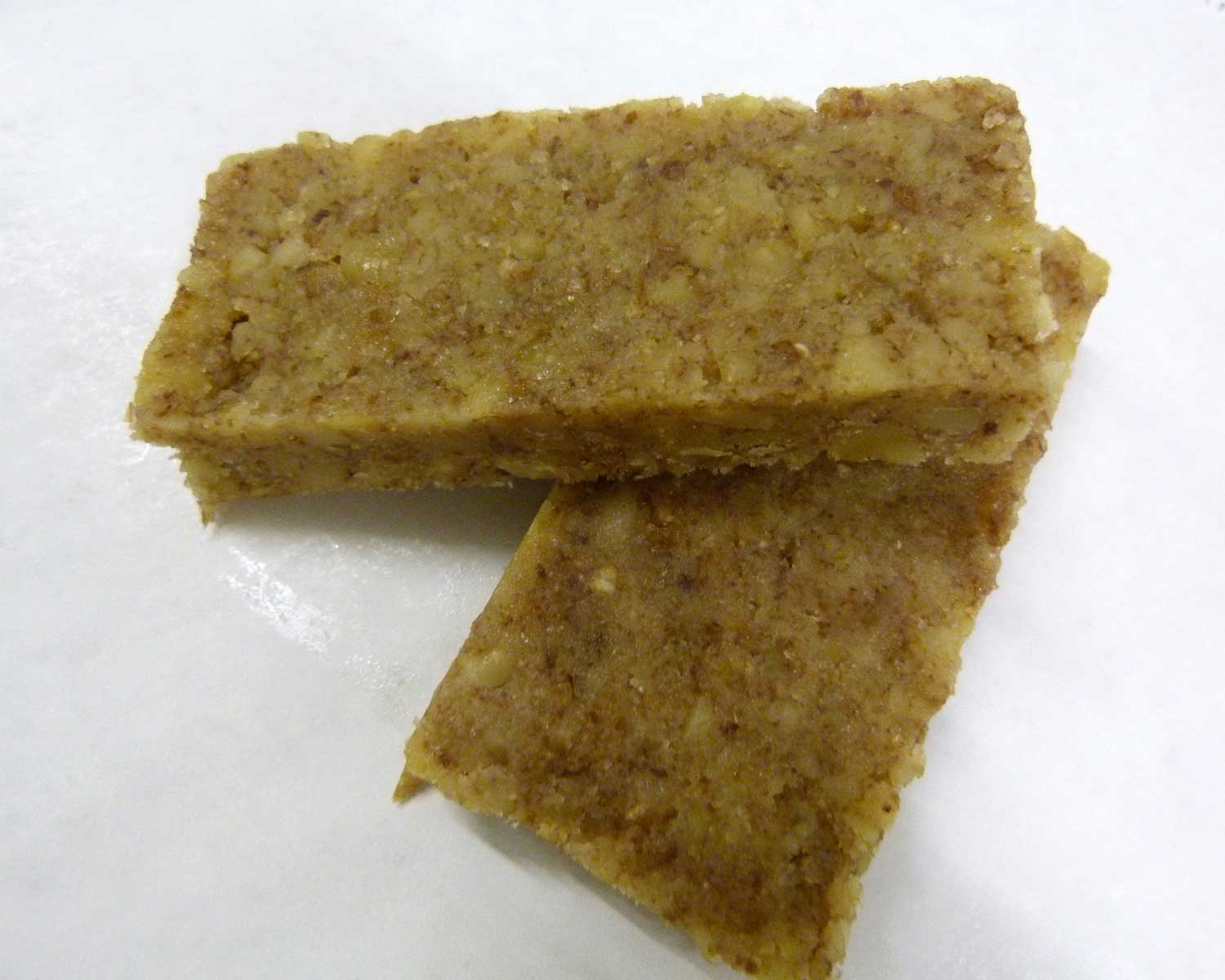
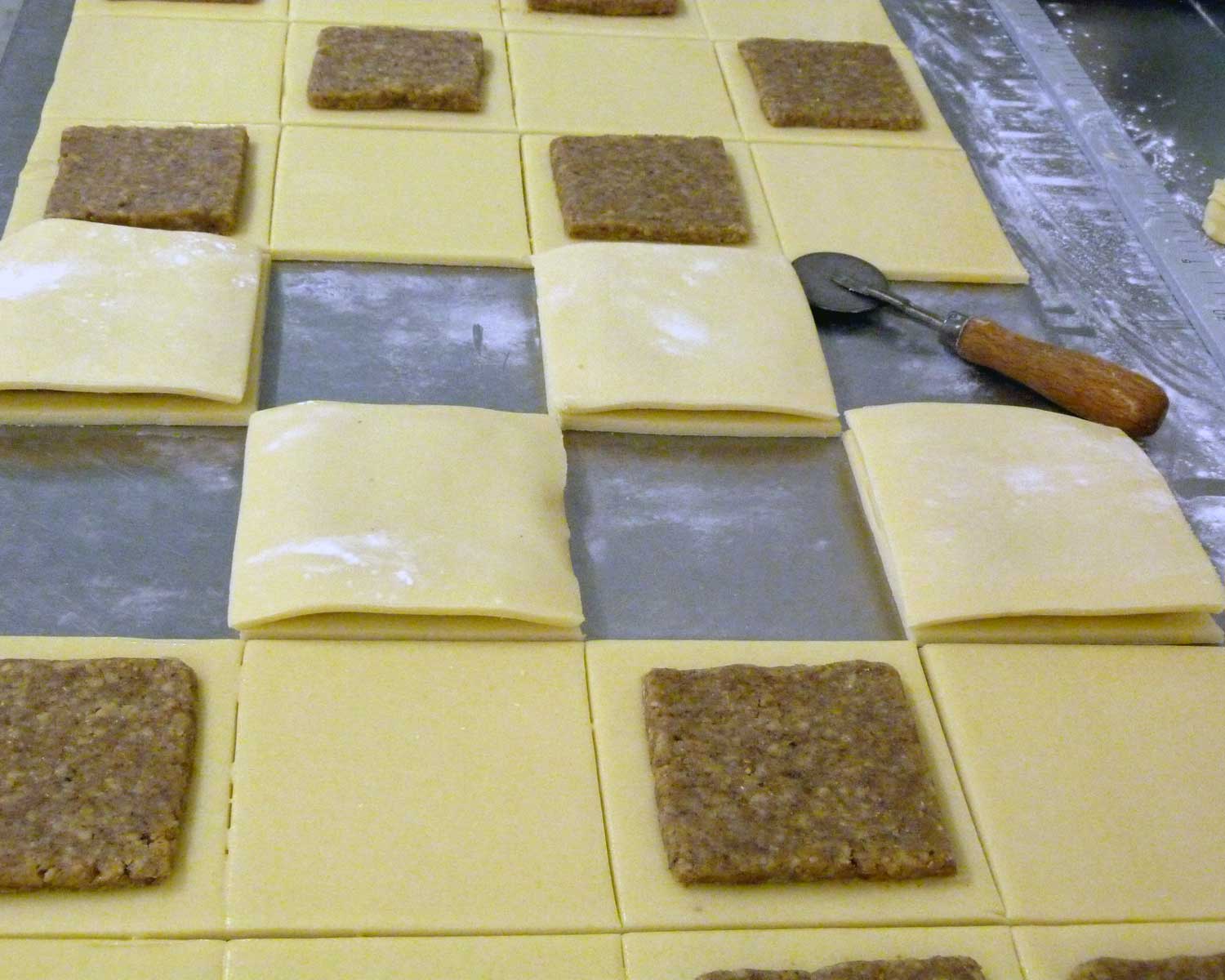
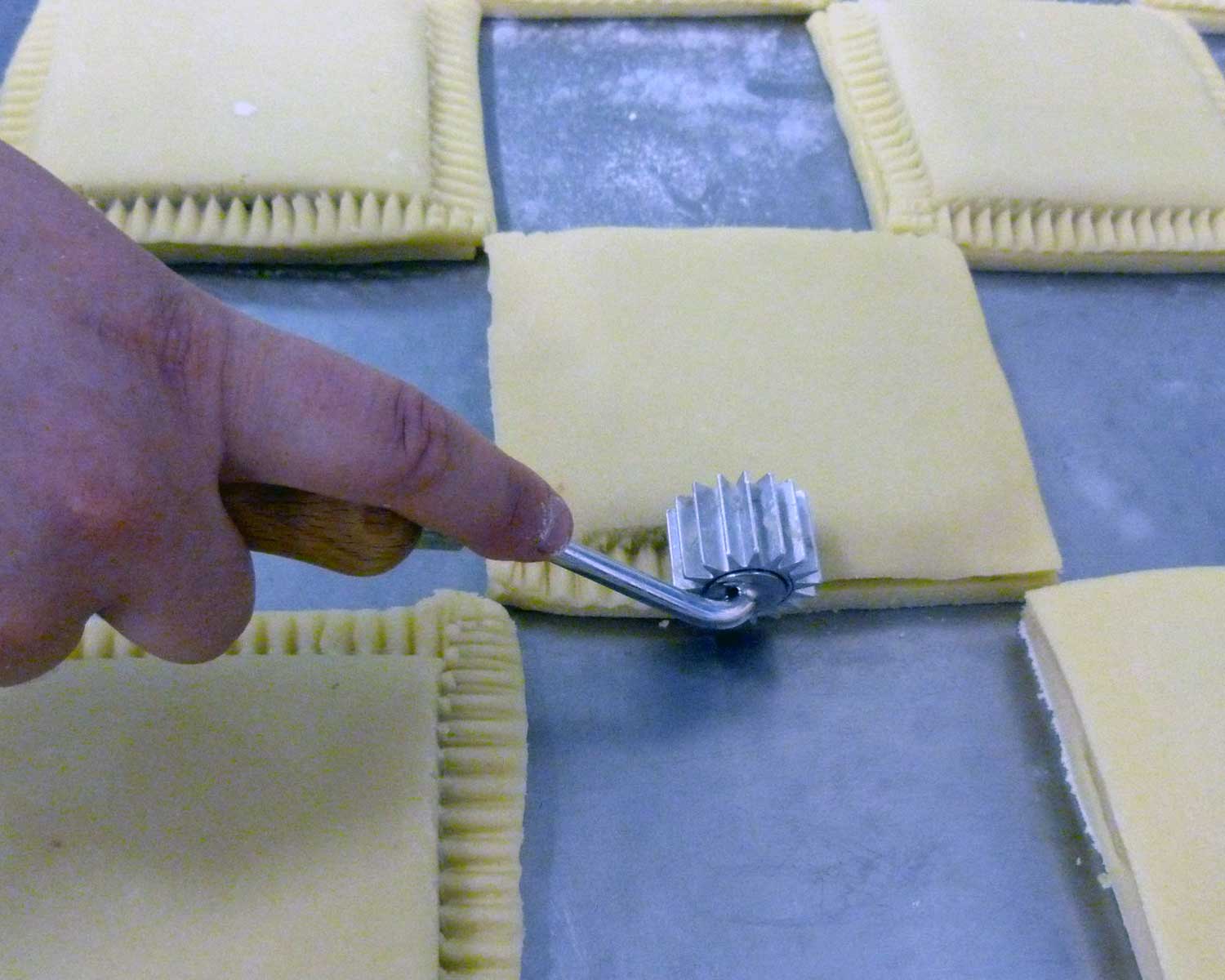
Recipe
Spampezia is a typical dessert from the Middle Leventine Valley.
It is a large crispy shortbread cookie enriched with a filling made of: nuts, butter, honey, sugar and grappa. Its origins are said to be from Osco, a village located above Faido-Polmengo, but it is also claimed that it was the Capuchin friars of Faido who first produced them. Let’s leave the mystery open!
The characteristic feature of the cake is the grappa flavor that can be perceived among the taste of nuts. Each family has its own recipe and its own jealously guarded wood-carved forms, which is why there are different versions.
The main ingredients are: frumaneto 00 flour, butter, walnuts, grappa, honey, sugar ,flavorings and spices. We do not use wooden modules in our production due to time issues, this detail does not change the quality of the product at all. It is produced throughout the year.
Serving suggestion : serve spampezia at room temperature so that the taste of butter and grappa stand out more on the palate.
The molds
Crèfli and spampezie were sweets that Leventine families usually made on the occasion of a holiday.
To better highlight the meaning and value of the festival, they were decorated with specific symbols carved into the wood of the molds (also called “forms”).
These artistic utensils were generally the work of some skilled local craftsman: they were rarely of Swiss-German origin, particularly from Brienz, a village in Canton Bern where, in keeping with a time-tested tradition, several woodcarvers still work.
Before use, the “forms” had to be sprinkled with a handful of flour, otherwise the dough would stick. They should not be washed after use, only brushed, so they will keep better.
We now come to the analysis of some of the symbols reproduced on the molds.
The fish
In the collection of the Leventina Museum, the most beautiful piece with fish comes from Osco.
It is elegant, almost darting, shaped, sculpted by an expert hand: the lack of fins is made up for by scales.
The fish is a Christian religious symbol; it is a profession of faith and belonging to Jesus Christ.
The double-headed eagle
The double-headed eagle is found on three Giornico molds. In the Alps, the eagle was the most admired and feared bird. It flies high above the peaks and was believed to be able to look directly at the sun.
It was a bird-symbol surrounded by many legends, almost mythologized. The double-headed eagle sweeps its gaze everywhere, so it is a symbol and guardian of the two worlds, heaven and earth.
The marriage
In a peasant world where the existence of every human being was entirely tied to the changing of the seasons, the birth, growth and reproduction of plants and animals, quite another force had the words, Go, multiply and fill the whole earth. Marriage, as well as the union of two people who love each other, was an absolute necessity for individual and small valley communities to survive.
Stunning, naive, and naughty, the molds with the bride and groom capture an extraordinary day: the man wears a hat and the bride has her hair styled properly.
It looks like an illustration for a page from The Betrothed.
Taken from “Crèfli and Spampezie, two Leventina specialties (Leventina Museum)”
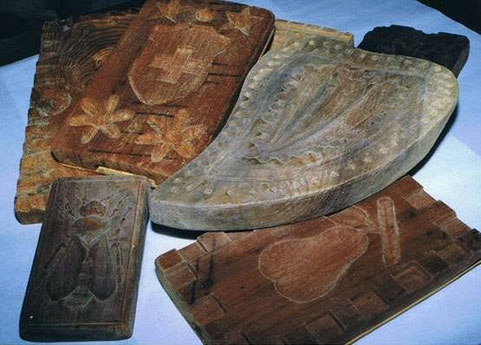
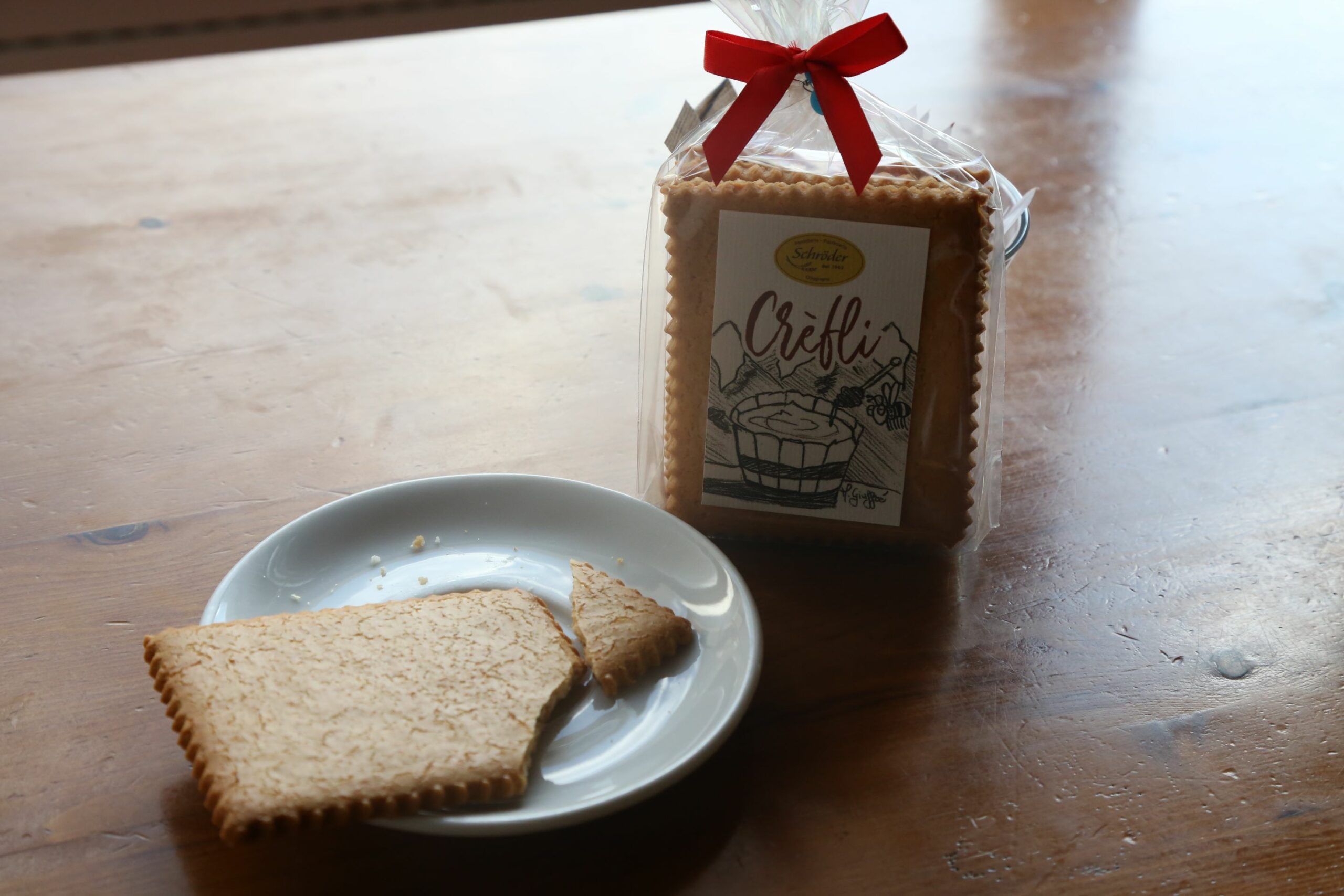
The Crèfli
According to popular etymology crèfli comes from the German “Kraft” (strength) and stands for the nutritional virtue of this sweet food.
Indeed, the Airolo tradition taken up on a poster by a skilled baker from Airolo to present his product, has it that “as early as the last century, postmen passing over the Gotthard Pass on cold and stormy days would put a crèfli under their teeth.
In fact, crèfli melt slowly in the mouth and, being confined with lots of honey and sugar, continuously supply the body with sugary substances, which are known to give strength.”
Even the cusciadoo (the airolese snow shovelers in charge of keeping the Gotthard Paddo open throughout the winter), who practically disappeared in 1882 with the opening of the Gotthard railway line, used to refresh themselves, of crèfli in order to be able to assolvrer, even at times when the fortunes of nature seemed to want to overwhelm man, their difficult task.
According to information gathered by the editors of the “Atlas of Swiss Folklore,” crèfli spread from central Switzerland eastward to the region of the lakes of Zurich and Walenstadt, through the cantons of Schwyz and Zug, westward across the Brünig to Brienz and the Goms Valley, and likewise to the Leventina Valley and a few places in the canton of Graubünden.
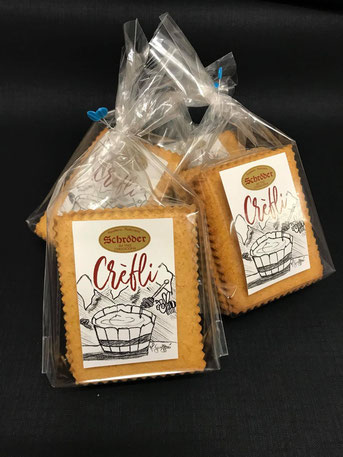
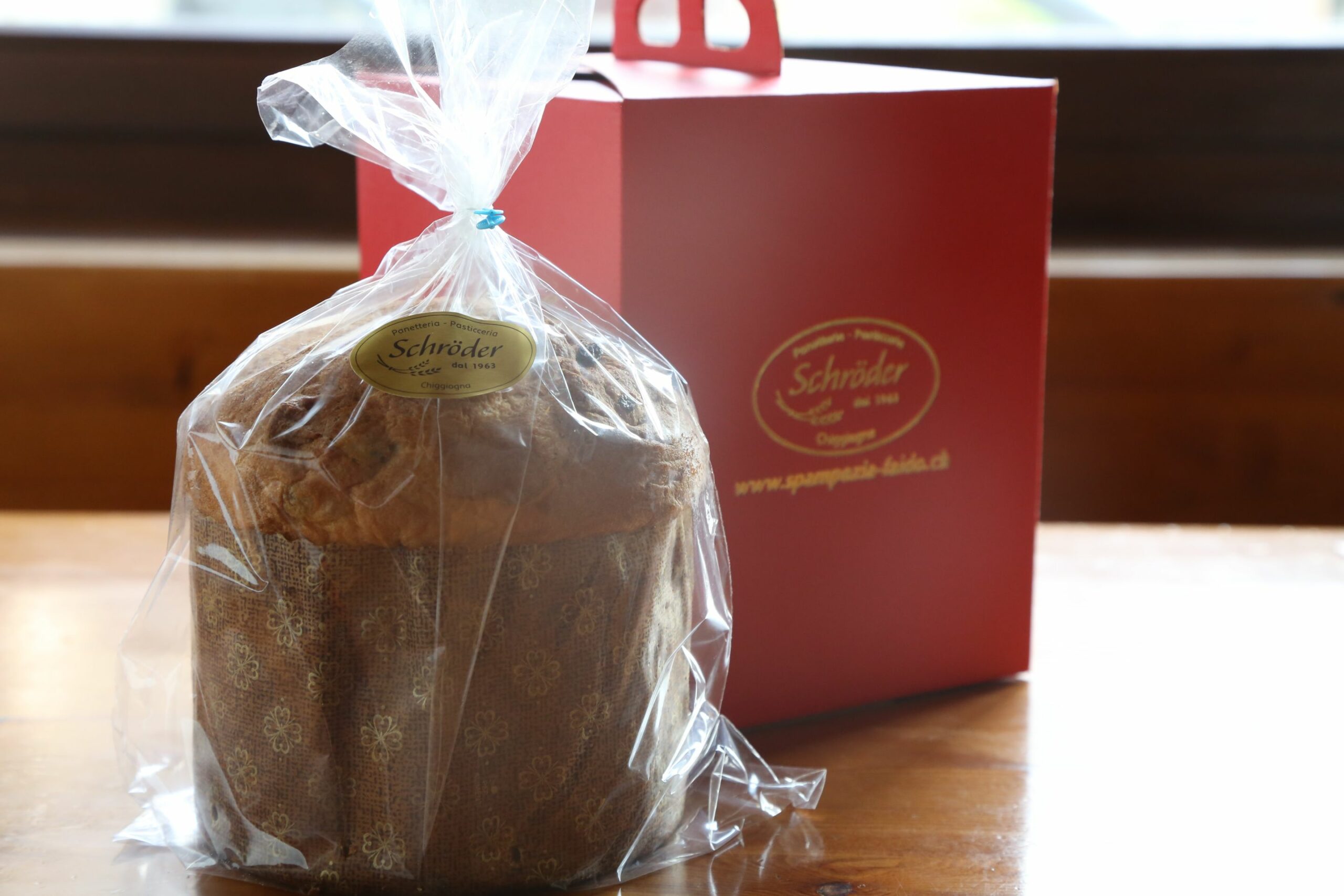
Panettone Ticinese
To enjoy Panettone as it deserves and appreciate its extraordinary fragrance and softness, it is essential to first bring it to room temperature of about 22-24°C. Only then does the Panettone fully reveal all its flavor characteristics.
Ingredients
Wheat flour, candied fruit (arancini and citron), sugar, raisins , butter , egg yolk, honey, iodized table salt, natural flavors.
